Living and Learning: being the same, being different
We have been talking about how we are the same and how we are different. It can be about how we look, what we like and how we feel. It’s important to celebrate our similarities and differences.
Help at home by discussing similarties and differences.
Design and Technology


Over the last week in design and technology we have been developing our food preperation skills by making overnight oats.
We have followed hygiene instructions to make sure the children have tied their hair back and washed their hands.
The children followed the recepie ensuring they weighed out the correct amount of ingredients. They were able to cut the fruit using the bridge method they had been shown.
Everyone enjoyed having a taste of the oats!
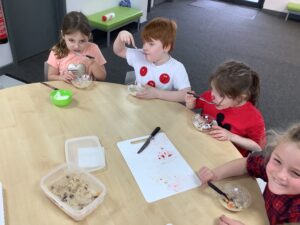
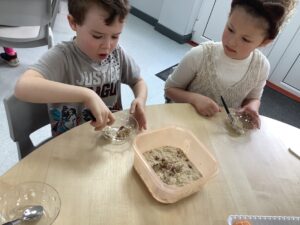
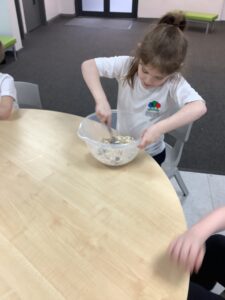
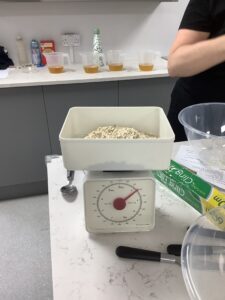
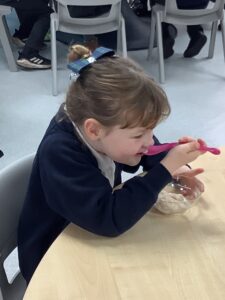
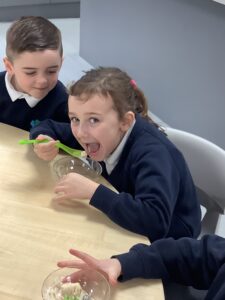
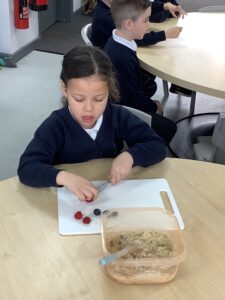

Maths – shapes
Our focus in Y2 Maths this week has been shapes. We have been looking 2D and 3D shapes. We know the names of lots of 2D shapes, how to count sides and how to count the vertices. We have also explored 3D shapes, how to count edges, faces and vertices. We even came up with a method, so that we wouldn’t loose track of the faces we had already counted!
Today in 2C we looked at vertical symmetry and how to spot it in 2D shapes. We used paper shapes and folded them to see if they had vertical lines of symmetry. We also used mirrors to check the symmetry of shapes in our books and plastic 2D shapes.








Topic – computing
Over this half term, KS1 have been learning to use the program Scratch Jr. We have been learning to create and debug algorithms, create sequences using commands and use this to put together a quiz.
We know how to choose Sprites (characters) and backgrounds.

We know how to get our Sprites to speak and how to change what they say.

We also know how to get our Sprites to move and how to sequence our commands correctly.

This week we finished our quizzes. Have have had so much fun using Scratch Jr and learning how it works!
Help at home by downloading Scratch Jr or another coding app or program – ScratchJr – Home
Living and Learning: strong emotions
In our Living and Learning sessions we have been talking about our feelings, and in particular, strong emotions. We all have felt angry, sad and happy at some point. We identified emotions on other people’s faces and talked about how emotions can feel overwhelming but will pass over time.
Help at home by identifying and discussing different emotions that you might be feeling.
Red Nose Day

A huge thank you to everyone that donated money last Friday for Comic Relief. The Junior Leadership Team stood at the gate and shook their buckets and collected any donations. You are such a generous bunch of people and we managed to raise £337.97. Thank you again for your support.
English – verbs
This week in Year 2 we are learning about verbs. Our school defines a verb as ‘a doing or a being word’. Today, Year 2 went out onto the playground for a lesson about verbs. We imagined that we were getting up on a morning and getting ready for school. This involved acting out lots and lots of verbs. We slept, we yawned, we stretched and then we brushed our teeth!


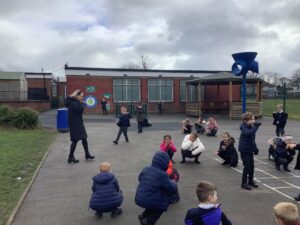
The children loved doing their learning on the playground and said that it would help them to remember what type of word class a verb is.
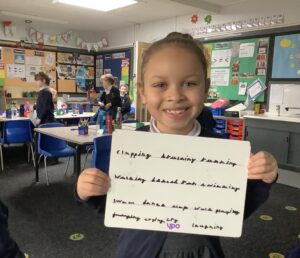
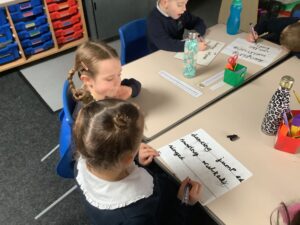
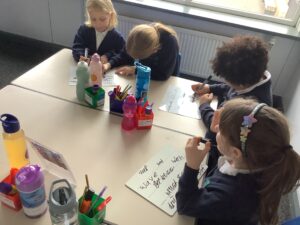
When we returned to the classroom, we recapped some of the verbs we had learnt. We also wrote some of the verbs in the past and present tense.
Help at home by discussing verbs as you do tasks at home.
Maths – money, money, money!
In Year 2 Maths we are currently learning about money. We are able to recognise coins and notes, and differentiate between pounds and pence, but we are still working on this! We have also been learning to make amounts of money by choosing the correct pounds, pence and notes.
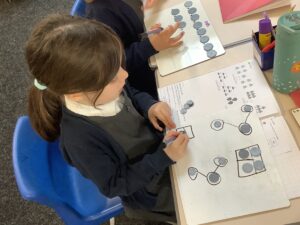
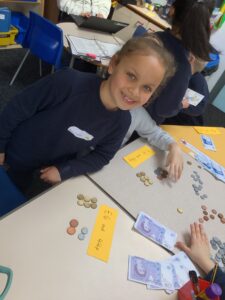
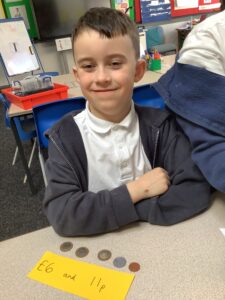
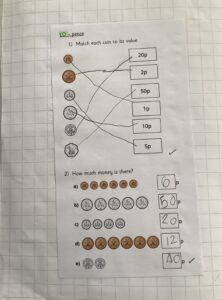

We have used our knowledge of addition and multiplication to perform calculations about money. Next week we will use our knowledge of partitioning, grouping and subtraction to help us with our next block of learning.
Help at home – by showing your child coins and notes and discussing their value. You can also use the money and practice addition.
Writing – all things Dragons!
This half-term our class novel is ‘The Boy Who Grew Dragons’ by author, Andy Shepherd. We are really enjoying reading the book and discovering the mischief that the dragon in the story causes for the main character, Tomas.
Last week in Y2, we drew our own dragons and wrote some adjectives to describe our dragons. We then put the adjectives into some expanded noun phrases.
We have also been learning about possessive apostrophes. We know that these types of apostrophes are used to show belonging/ possession.
See some of our fantastic work below!
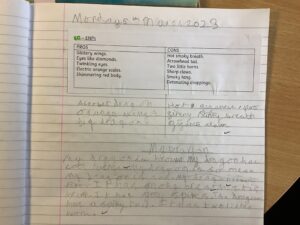
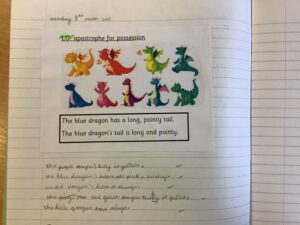

Help at home – by encouraging your child to use adjectives to describe things around the home or characters in books you are reading.
Science – working scientifically
This half term our science topic is working scientifically.
During this topic, we will be comparing different roads types and conducting investigations to find out what the best road surface is.
The scientist we will be finding out about is John McAdam. He invented a new way to build roads so that they were smooth, hard and allowed rain to drain away.
